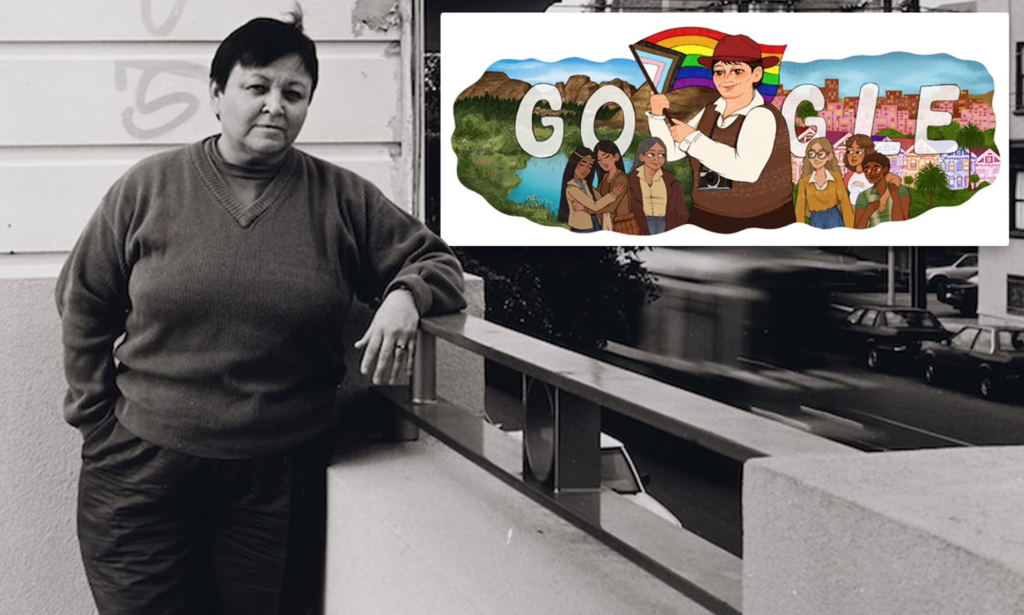Introduction
Barbara May Cameron is a beacon of desire and change, an influential figure in the fight for LGBTQ and Indigenous rights. Her lifestyle and artwork left an indelible mark on the facts, championing the intersectionality of these organizations and advocating for justice and equality. Through her tireless efforts, Cameron has become a celebrated icon whose legacy inspires activists and advocates.
Cameron moved to San Francisco in the 1970s, a time marked by social upheaval and the burgeoning LGBTQ rights movement. This is where it changed as she began to find her voice as a trailblazer and activist, integrating her Indigenous identity alongside her LGBTQ identity in a way that would set her apart in all movements.
Advocating for LGBTQ rights

Barbara May Cameron’s contributions to the LGBTQ rights movement are profound and impactful. As an openly lesbian Aboriginal woman, she brought a very unique and vital perspective to the fight for equality. In 1975, Cameron co-founded Gay American Indians (GAI), the number one business specifically for LGBTQ Native Americans. GAI’s goal was to provide safe proximity to LGBTQ Native Americans and address the exacting challenges they faced, including cultural alienation and discrimination within each Native and LGBTQ group.
Indigenous rights advocacy
Barbara May Cameron‘s activism went beyond LGBTQ rights; she has also turned into a fierce advocate for aboriginal rights. Her paintings regularly dealt with the overlapping oppressions faced by indigenous people, mainly ladies, within the United States. She has worked with many corporations to sell social justice, cultural renovation, and political representation for Native Americans.
Cameron’s activism included efforts to combat oppositional violence against Indigenous women, improving health and education opportunities, and preserving Indigenous languages and traditions. She believed in the power of storytelling and cultural expression as tools for resistance and empowerment. Her work at this place is no longer most effective in advocacy, but additionally approximately cultivates and celebrates aboriginal identification.
Impact on policy and legislation
Barbara May Cameron’s efforts extended into the geographies of politics and legislation. She has worked with several governmental and non-governmental companies to persuade public information related to LGBTQ and Indigenous rights. Her ability to articulate the specific needs and challenging situations of these organizations made her a valuable voice in legislative discussions.
Cameron has played a widespread role in advocating the inclusion of sexual orientation in anti-discrimination laws and tips. Her artistic work has helped ensure that LGBTQ people, especially those from marginalized corporations, are included under the law. In addition, her efforts in selling Native rights helped to multiply the visibility and handbook of Native American issues at the national level.
Legacy and continuing influence
Barbara May Cameron legacy is certainly one of resilience, compassion and an unwavering commitment to justice. Her artwork has had a lasting impact on every LGBTQ and Indigenous rights movement, becoming pathways for fateful generations of activists. Cameron’s power of mind for intersectional advocacy has inspired countless people to continue to fight for equality and lead by example.
Cameron’s life and paintings are often celebrated in all Indigenous and LGBTQ organizations. Her story is a testament to the energy of cross-sector activism and the importance of reaching marginalized businesses with accurate messages. As a trailblazer, Cameron’s influence is seen in ongoing efforts to create extra inclusive and just spaces for all people.
In addition to formal awards, Cameron’s legacy is honored through ongoing paintings by the agencies she helped place and assist. Gay American Indians and other organizations that focus on intersectional advocacy are trying to keep her enterprise moving forward and ensure that her contributions are not forgotten.
The intersectionality of Cameron’s activism
One of the greatest additions to Barbara May Cameron’s work turned into her emphasis on intersectionality. She understood that the struggles faced by LGBTQ people could not be separated from those faced by the useful resources of Indigenous people. Her activism emphasized the interconnected nature of these issues and the need for a holistic social justice technique.
Cameron’s intersectional approach has led many contemporary activists to recognize the importance of addressing multiple kinds of oppression simultaneously. Her paintings serve as a blueprint for those looking for further inclusive steps that are familiar and address numerous studies of marginalized corporations.
Personal reflections and philosophy
Barbara May Cameron’s philosophy is rooted in compassion, empathy and a deep sense of justice. She believed in the energy of community and the importance of standing up for what is right, even in the face of adversity. Her reflections on her paintings often emphasized the desire for team spirit and mutual aid among marginalized groups.
In addition, Cameron’s reflections highlighted the importance of cultural pride and identity. She has often spoken approximately wanting to maintain and represent the wonderful time of indigenous cultures and traditions as a form of resistance to colonialism and assimilation. This cultural delight was crucial to her activism and empowering for her and the people she inspired.
Challenges and Overcoming Adversity
Barbara May Cameron faced several challenging situations at some point in her existence and career. As an indigenous lesbian woman, she encountered discrimination and prejudice on multiple fronts. However, the most challenging challenges strengthened her determination to fight for justice and equality.
Future directions and continuing the legacy

Barbara May Cameron’s paintings are preserved through the efforts of contemporary activists and groups who build on her legacy. As the fight for LGBTQ and Indigenous rights continues, Cameron’s contributions offer a foundation for continued advocacy and development.
Future guidelines in this subject will likely continue to emphasize intersectionality and the need for inclusive practices for social justice. Barbara May Cameron’s legacy serves as a guide for those dedicated to developing a fairer and simpler society.
Barbara May Cameron (1954-2002) became a prominent Native American activist, writer, and photographer who became famous for her paintings in defense of the rights of LGBTQ human beings and indigenous peoples. Born on the Standing Rock Sioux Reservation in North Dakota, Cameron’s early research in a marginalized community deeply inspired her lifelong commitment to social justice. Her adventure from the reservation to becoming a leading voice in several civil rights movements is a testament to her resilience and determination.
Cameron’s activism began to take shape sooner or later after her college years. She moved to San Francisco in the 1970s, a time of widespread social and political upheaval, particularly within the LGBTQ community. As a lesbian Native American girl, she faced particularly challenging conditions and intersecting types of discrimination. However, these troubling situations became a direct driving force for her activism.
Cameron founded Gay American Indians (GAI) in 1975 with her friend Randy Burns. GAI became the first organization to advocate for LGBTQ Native American rights, providing a vital platform for this often-neglected intersection of identities.
Through GAI, Cameron worked tirelessly to address issues including HIV/AIDS, alcoholism, and suicide among Native American groups, while selling cultural pride and visibility for LGBTQ Native Americans. Her paintings have helped break the silence around LGBTQ issues in Indigenous communities and foster a more inclusive environment where human beings should embrace all components of their identity without fear of retribution or stigma. Cameron’s control of interior GAI became instrumental in expanding the network of manuals and advocacy that continues to energize activists these days.
In addition to her activism, Cameron has become a professional author and photographer. Her written works have regularly explored issues of identification, way of life, and resilience, providing poignant insight into the lived reviews of Native American LGBTQ human beings. She has contributed to several anthologies and guides, using her voice to highlight the stories and struggles of those who find themselves on the fringes of more than one marginalized identity. In addition, Cameron’s imagery served as an effective medium for storytelling, capturing the rich cultural history of Native Americans and the vibrant spirit of the LGBTQ network.
Cameron’s influence extended beyond her artwork with GAI. It has morphed into several distinct groups and initiatives focused on selling social justice and equality. She served on the board of directors for the Lesbian Rights Project (now the National Center for Lesbian Rights) and Gay Rights Advocates, where she worked to secure some prison protections and equal rights for LGBTQ people. Her advocacy paintings also covered efforts to decorate healthcare, education, and housing for Native American groups, demonstrating her holistic approach to activism.
Cameron’s heritage is also considered in her paintings to bridge the distance between the Native American and LGBTQ communities. Believing in the electricity of concord and conformity, she advocated a more inclusive movement that diagnosed and celebrated diversity. Her efforts to build coalitions and foster mutual expertise have had a lasting effect, contributing to a more intersectional approach to social justice. Today, many groups and activists are trying to draw suggestions from her instance and try to create a fairer and more inclusive society.
During her lifetime, Cameron received several awards and recognitions for her contributions to civil rights. Her willpower for advocacy and her ability to inspire others have earned her a reputation within both the Native American and LGBTQ communities. However, her achievements were no longer quite private accolades; they represented a huge development for the motives she advocated. Cameron’s paintings helped pave the way for fateful generations of activists, ensuring their voices were heard and their rights recognized.
Barbara May Cameron passed away in 2002, but her legacy lives on through the endless lives she touched and the actions she helped shape. Her contributions to social justice, particularly in advocating for LGBTQ and Native American rights, still resonate today. Cameron’s story is a powerful reminder of the impact one extra character can have in the fight for equality and justice. Her courage, resilience and unwavering commitment to her principles act as a long-term supply of ideas for all who want to create a more virtual and inclusive international society.

When remembering Barbara May Cameron, it is very important to have a good time, not only to enhance her achievements but also the spirit in which she approached her artistic work. She showed that activism is not only about fighting in opposition to oppression but also about building communities, growing statistics, and promoting the dignity and arrest of every person. Cameron’s existence and legacy remind us of the power of compassion and the importance of a reputation for what is right, regardless of limitations.
Conclusion
The life and paintings of Barbara May Cameron are a powerful reminder of the importance of intersectional advocacy and the impact one character could have in an arena. Her contributions to LGBTQ and Indigenous rights have left an indelible mark on history and inspired countless people to continue the fight for justice and equality. Through her tireless efforts, Cameron has created a legacy that can be passed down through the generations, reminding us all of the power of compassion, resilience, and an unwavering commitment to justice.
Frequently asked questions
Q: Who became Barbara May Cameron?
A: Barbara May Cameron became an influential activist who supported both LGBTQ and Indigenous rights. She co-founded Gay American Indians and turned into a prominent distinction at every turn.
Q: What is Gay American Indians (GAI)?
A: Gay American Indians is a corporation co-founded by way of Barbara May Cameron in 1975. It was the primary group, especially for LGBTQ Native Americans that provided the manual and advocacy for this network.
Q: How did Barbara May Cameron impact LGBTQ rights?
A: Barbara May Cameron has greatly influenced LGBTQ rights through her activism and scrutiny. She advocated anti-discrimination legal tips and created support networks for LGBTQ people, especially those from Indigenous backgrounds.
Q: What were some of Barbara May Cameron’s contributions to Aboriginal rights?
A: Cameron’s contributions to Indigenous rights have encompassed efforts to combat violence against Indigenous girls, promote cultural preservation, and improve health and educational opportunities for Native Americans.
Q: What is Barbara May Cameron’s legacy?
Answer: Barbara May Cameron’s legacy is in each of them resilience and cross-sector advocacy. Her artwork has inspired countless activists and continues to persuasively fight for LGBTQ and Indigenous rights.
Q: How can Barbara May Cameron’s legacy be honored?
A: Honoring Barbara May Cameron’s legacy means persevering with her paintings in advocacy, supporting the groups she helped define, and selling intersectional social justice techniques.



